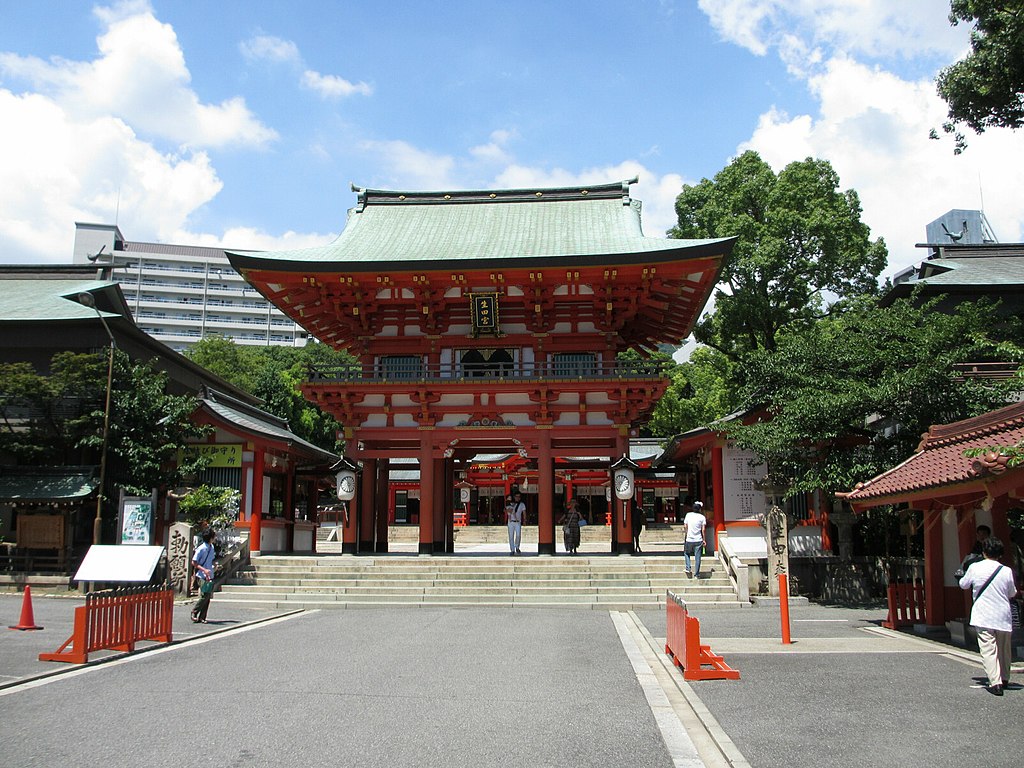Jun 26, 2018
The Most Popular Temples and Shrines in Kobe

Japan is a melting pot of several religions in the East. There are religions that have immigrated from different parts of Asia and there are those that originated within the country. Some of them are still existing today and pilgrimages still take place regularly to worship their deities. Others are left with structures like temples and shrines to remind the present of their significance in the past.
Temples and shrines are popularly visited by tourists and even locals especially in Kobe to relax and learn about the historical significance of the place just like when they visit castles and museums. People also come to these exclusively to worship and pay homage to their gods and goddesses that are predominant in religions in Asia. Specifically in this city that has a touch of foreign influence, these sacred buildings still stand amidst those that are already Westernized and some are even located in the city center so they are accessible to everyone.
Most of these structures have inspired artists, poets, painters and different people with creative inclinations for centuries. They are depicted in paintings that also showcase the beauty of the surroundings around them like trees, cherry blossoms and mountains. In modern times, they are present in movies, anime, manga and in works of famous photographers. You might be familiar with some of these on the list from the various literature and art pieces that you’ve come across.
Ikuta Shrine
It is one of the oldest Shinto shrines in the country that was founded sometime in the 3rd century A.D. by Empress Jingū for the god Wakahirume. Situated in the downtown area of Kobe, everyone can visit this astounding and sacred place everyday and for free. Noh plays such as the Ikuta Atsumori and Ebira that retell parts of the Genpei war are shown near the shrine regularly. These are also performed annually at the Autumn Festival of Ikuta or the Akimatsuri.
Yuzuruha Shrine
The shrine houses the symbol of soccer for Japan. Soccer players flock here to pray for good luck. It’s a typical shrine but its serene walking paths and pink cherry blossoms will give you the kind of peace you’re looking for in places of worship. You won’t have to worry about your dogs getting thirsty if you travel with them because there’s a designated water fountain for them.
Sumadera Temple
Famous historical figures drew inspiration from the charming cherry blossoms and the vast grounds in writing poetry such as waka, haiku and even Chinese poems. This Shingon-shu temple, also called Joya-san Fukusho-ji, was built in 886. If you love mechanical art, you’ll enjoy watching the pieces like marionette clocks that are displayed inside.
Minatogawa Shrine
The Battle of Minatogawa was somewhere around the grounds of this Shinto shrine. The god enshrined in this sacred place is the spirit of a military commander, Masashige Kusunoki. The site is one of the Fifteen Shrines of the Kenmu Restoration that are dedicated to the events and individuals involved in restoration. It was an effort of Emperor Go-Daigo to bring back the civilian government after 150 years of military rule.
Sannomiya Shrine
Right in the district of Chuo-ku or downtown area of Kobe stands a shrine built for the female diety, Takitsuhime no Mikoto, one of the three Munakata Sanjoshin or Munakata Three Female Deities who are known as deities for safety in traffic. She is also known to bring good luck in business and work among others, and blesses people with wisdom. There is a vermilion gate that also enshrines two deities, a Japanese zodiac chart or junishi on the floor, a chozubachi washbasin from the Edo Period and a cannon from the Kobe incident.
Kitano Tenmangu Shrine
One of the hundreds of shrines dedicated to Sugawara Michizane, a politician and scholar who was exiled by his rivals unjustly. Because of the tragic circumstance that he experienced, his vengeful spirit was said to be the catalyst of a number of disasters. To appease him, these shrines were built and are still maintained today. Since he is also associated with Tenjin, the Shinto god for education, students flock to this shrine during exam periods and seasons of school trips.
Taisanji Temple
This temple’s architectural style is a beautiful mix of Japanese and Chinese influences. Its main hall is the only official national treasure in Kobe that was completed in 1293. It is also known as Sanshinzan Taisan-ji and is built for the Tendai sect. In 716, the temple was established upon Empress Genshō’s instruction.
Gurdwara Guru Nanak Darbar
To veer away from the Japanese temples, this is the only Sikh temple in Kobe. It doesn’t look like a temple at all as it is simple building that is similar to a house. This atmosphere is common with the other temples of Sikhism. It is a two floor structure and the upper floor is the actual temple with a central altar and a carpeted floor. Similar to other Asian religions, there is a deity that they worship and prayers and offerings are made. It is a 15 to 30 minute walk from the Shin-Kobe Station.
Visiting these historical and religious sites is a great way to learn about spirituality, traditions and beliefs.
DVMG [CC BY 3.0], via Wikimedia Commons


About the author